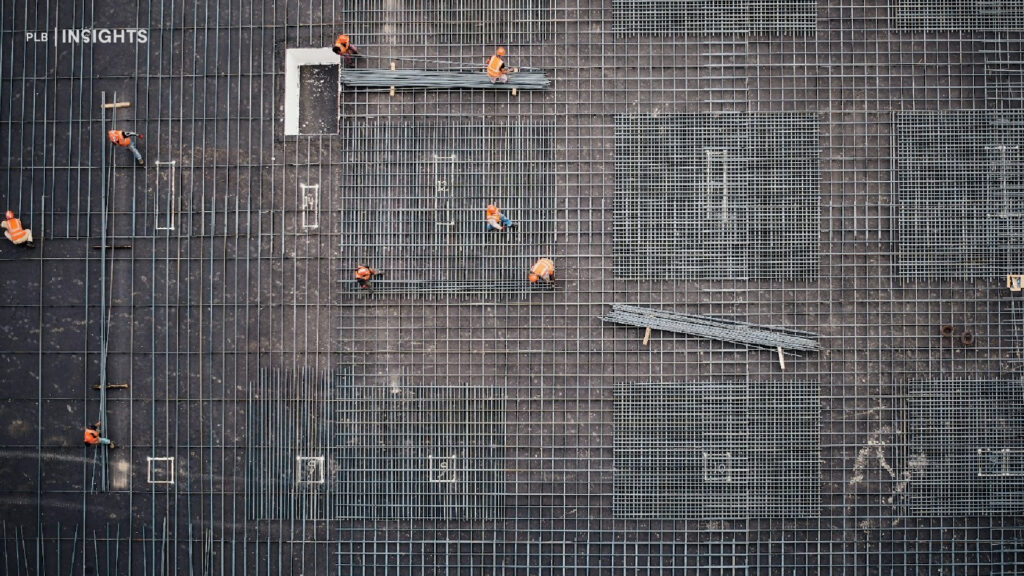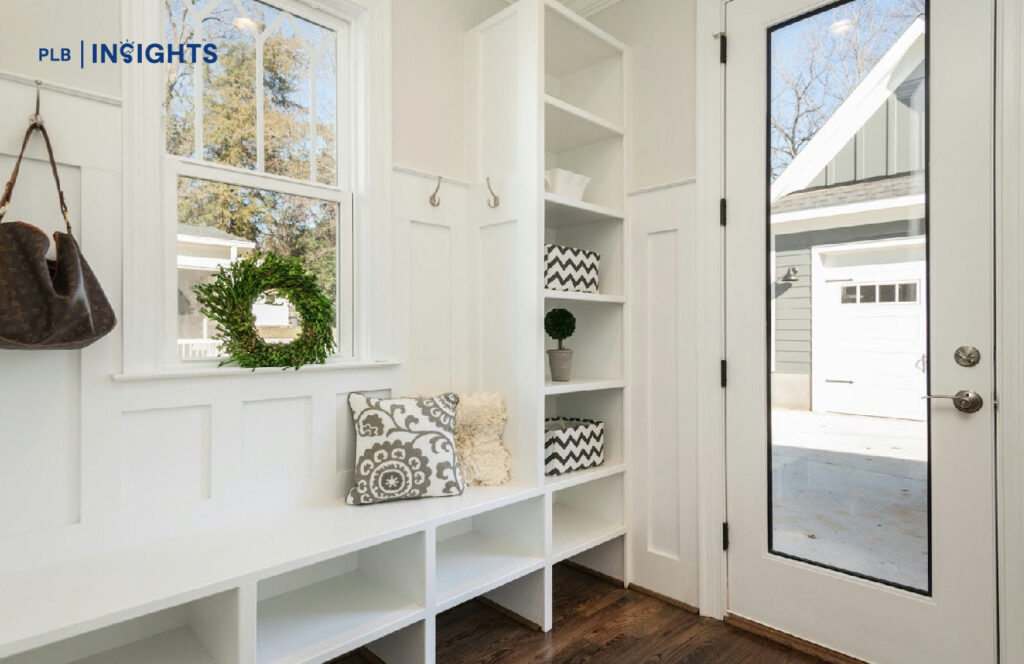
As you scroll through TikTok, you may have come across the viral videos of Little John’s apartment, which have sparked interest in industrial home designs. These animated videos, found on a niche side of the platform before going viral, feature a fictional builder called Little John. They involve a prominent use of galvanised square steel, eco-friendly wood veneers, and screws borrowed from his aunt to transform a tiny room into a fully functional living space.
When it comes to transforming your home in Singapore, the renovation process can be exciting yet daunting. With limited space and strict regulations that must be followed, it is crucial to know how to navigate making big changes to your living spaces.
Little John may have created innovative home designs using galvanised square steel and eco-friendly wood veneers, however, how many aspects of his process are functional and safe enough to pass building inspections to complete a home renovation process?
In this article, we will go over the dos and don’ts of renovating your home in Singapore and provide you with essential guidelines to navigate the process efficiently and easily. We aim to ensure that you can create a home that is not only safe, reflects your taste and preferences but also offers you unparalleled comfort.
Do’s
Plan in Advance
The first tip for starting the renovation process for your home may be obvious but is an essential one. Little John creates a functional living space in an apartment with minimal space by coming up with a plan that fits his budget, meets his lifestyle requirements, and uses sustainable and durable materials.
Similarly, before starting any renovation work, it is important to create a detailed plan that outlines the timeline of your renovation project, goals and a budget. This ensures that you stay on track and helps you avoid making costly mistakes along the way. Additionally, an outline of your plan will allow you to take note of the different permits you may need to obtain well in advance.
Research The Style
Little John is known for using sustainable, affordable and durable materials such as galvanised square steel, eco-friendly wood veneers, and wall-mounted furniture to optimise space in his apartment. Moreover, he designs his living space using minimalistic and industrial-style elements. Before you get started on your home renovation, take the time to research the different styles there are for both landed and non-landed property.

A great way to get an idea of what style is ideal for you is to browse social media platforms like Pinterest, TikTok and Instagram. These platforms have a plethora of content creators in the home design and real estate niches offering inspiration, information and educational content on all aspects of interior design – from design elements and style to the types of materials used to achieve your preferred aesthetic.
Going to showrooms and furniture stores is also a great way for you to visualise what you would like your home to look like, and what pieces you would like to decorate your home with after the renovation.

Additionally, you can create collages or mood boards that visually present your ideas and inspirations, including colour schemes, furniture pieces, and your preferred style elements. Little John’s industrial aesthetic may not be for you, however, there are various design elements and styles out there that may be better suited to your personality and preferences.
Obtain Essential Permits
Obtaining all of the required permits before starting any renovations is critical to check that your upgrades comply with Singapore’s building codes and regulations. This will ensure that your renovation project is done in accordance with legal requirements and industry regulations, and that it meets safety standards.
In Singapore, there are a set of regulations that homeowners of private and public residential properties must take note of. Let’s go over some of them.
For Housing and Development Board (HDB) flats, all renovation works require a permit. This only excludes minor works such as changing the floors or repainting the walls. Depending on what part of your home you plan on renovating, you may have to obtain a permit for building works, walls, kitchens, household shelters, staircases, bathrooms and toilets. Check out the conditions for HDB’s permit requirements here.
For renovating private condo units, you must obtain a permit from the condominium’s management and from the Building and Construction Authority (BCA). It is also required that you work with a contractor registered under the BCA to ensure that any structural changes are carried out safely in accordance with the BCA’s regulations.
Invest in Quality
Investing in quality materials, fixtures, furniture and decorative pieces is essential for creating a living space that is functional and visually appealing. As we have mentioned, Little John makes use of materials that are not only durable but are eco-friendly and also fit within his budget. Eco-friendly wood veneers may not be what you want for your home, but there are various materials that are high-quality, energy-efficient and good long-term investments.

Some of these include using laminate flooring, vinyl flooring or ceramic tiles for the floors of your home, choosing between high-quality paints or wallpapers for your walls, and materials like marble or granite for solid surfaces in your property (kitchens and countertops). Moreover, choosing materials that fit within your budget, are durable and of good quality all contribute to a comfortable living environment with lower maintenance costs and a potential to appreciate overtime.
Consulting a Professional

If you are unsure about which style or material is ideal for your home, the best way to move forward is by consulting a professional. Interior designers and decorators can offer expert advice, help you refine your vision, and guide you on how to personalise your home using materials and designs that meet your personal tastes and lifestyle without going over your budget or forgoing legalities throughout the renovation process.
Don’t’s
Ignore Safety Regulations
Obtaining all the necessary permits is one thing, but a crucial step in renovating your home that cannot be missed is keeping with the safety regulations. Ensure that you make safety measures a top priority during your renovation project. Following these guidelines allows you to keep yourself and your family safe from accidents or injuries.
Overlook Hidden Costs
Home renovations can be very expensive, and even after planning and outlining a budget, there are unexpected costs that can arise during the process. As such, it is important to budget for these unexpected costs that could arise. These may include additional structural repairs, electrical upgrades, water damage, changes in supply or furniture orders, delays, and overtime charges.
By being aware of these hidden costs and allocating a buffer amount into your budget early on, you can be prepared for unforeseen expenses and ensure that the renovation process stays on track financially.
Change Floor Plans Without Expert Advice

Little John uses his famed galvanised square steel to expand space in his tiny apartment, however, is it legal or safe to change your floor plan to expand or make a balcony in Singapore?
Changing your floor plan without expert advice in Singapore may pose risks that are related to building regulations, structural integrity, and the aesthetics of your property – especially for non-landed property owners. Additionally, doing so may require permits if they are allowed.
For instance, if you own an HDB flat you want to renovate by changing the floor plan in any manner, you will require a permit to do so on top of working with a contractor listed in the HDB’s Directory of Renovation Contractors. Moreover, if you plan on moving a placement of your doors, hacking down walls or floors, replacing windows or undertake any electrical and plumbing work, you are required to obtain an HDB renovation permit.
While private property owners may have some flexibility in making changes to floor plans without the same level of approval required for HDB units, there are a set of regulations and relevant permits set by the Urban Redevelopment Authority (URA) and BCA that homeowners must follow and obtain before making any changes. According to the URA, changes such as adding another storey, replacing a roof, and replacing or adding new walls is considered to be a reconstruction and may require permission.
Check out URA’s guidelines for renovations and reconstructions for landed properties and strata-titled properties to see whether or not you need to obtain a planning permission before making changes to the floor plan of your home.
Forget Essential Elements
Our final tip for those of you on a home renovation journey is to remember the essential elements. These include factors like lighting, storage, comfort and your personal style.

Researching on different platforms and getting inspiration for what you would like your home to look like is a great tip to use early on in the renovation process of your home as it provides you with a visual representation of the different styles and designs that are trendy. However, it can be easy to neglect some important factors like having enough storage for your belongings, the type of lighting you would like to have in your home, and being able to incorporate your personal style without forgoing comfort.
Prioritising these key elements in the renovation process can ensure that you are able to create a well-designed and personalised space that meets your needs, reflects your unique likes and dislikes, and feels like home.
Closing Thoughts
In the spirit of Little John’s innovative approach to renovate his apartment using galvanised square steel, getting started on your own home renovation journey can be a creative and rewarding endeavour.
With creativity, there is also a need for planning and starting your renovation project with a blend of practicality, thoughtful decision-making, and attention to detail. From obtaining the required permits to investing in quality materials that are durable, sustainable and a good long-term option, all the decisions you make throughout this process play an important role in a successful home renovation project. By avoiding common pitfalls such as changing floor plans without expert advice and forgetting the essential elements you need for your property to feel like home, you can create a home that meets your practical needs while also reflecting your unique personality and style.
Get in Touch With Us
Looking for your dream home with an ideal layout but unsure where to start? Do not hesitate to reach out to us here, our experienced consultants stand ready to assist you in your property journey.
See you in the next one!







